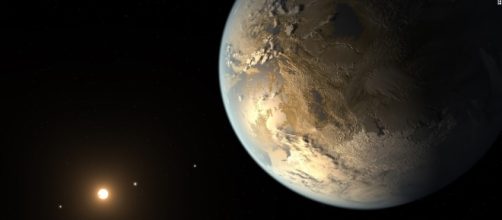On Wednesday, NASA announced in a special news conference held in Washington that seven Earth-sized planets have been discovered. These planets were orbiting around a small single star about 40 light-years away.
Astronomers thrilled with the discovery of Earth-sized planets
Scientists all around the world were thrilled with the latest Discovery of seven worlds similar to Earth. According to the reports, these planets are warm enough to hold water and life. This discovery once again raised hopes of alien life beyond our solar system.
According to NASA, these seven worlds circled tightly around a dim, dwarf star named Trappist-1.
It is red, dark and the size of the star is a bit larger than that of Jupiter. Out of the seven planets, three planets were found in a zone considered to be a habitable zone whereas the remaining four planets were found on the doorstep.
According to scientist Amaury Triaud, this discovery is a crucial step in finding life outside earth. During her press briefing, Amaury stated that this is the right step towards finding life on other planets.
According to NASA’s associate administrator, Mr. Thomas Zurbuchen, the discovery of the seven earth sized planets has given a hint that finding a planet similar to earth is just a question of when and not if. He also added that this is the right step in answering the old age question whether we are alone out here.
Three planets were found last year
It was last year that Michael Gillon, along with his team, found three other planets rotating around Trappist-1. With the latest discovery, the count has now reached seven planets. The Trappist-1 planets are in a tight orbit. The orbits range from 1.5 to 12 days, and all the seven satellites fit comfortably in the area between the Sun and Mercury. According to Gillon, the count may even rise in the coming days.
Gillon, along with his team, started their research with the help of a dedicated telescope in 2010 and announced their first findings last year.
What is the next step?
The next step for astronomers is to find whether these planets have liquid water and study them to determine if any life exists on the seven planets.
Gillon and his team are continuing with the research and are focused on analyzing the chemical properties of the planets. Gillon said that he is confident that the chemical analysis will help to determine whether life exists on any of these earth sized planets, but nothing can be 100% sure until scientists, or probes, go there.

